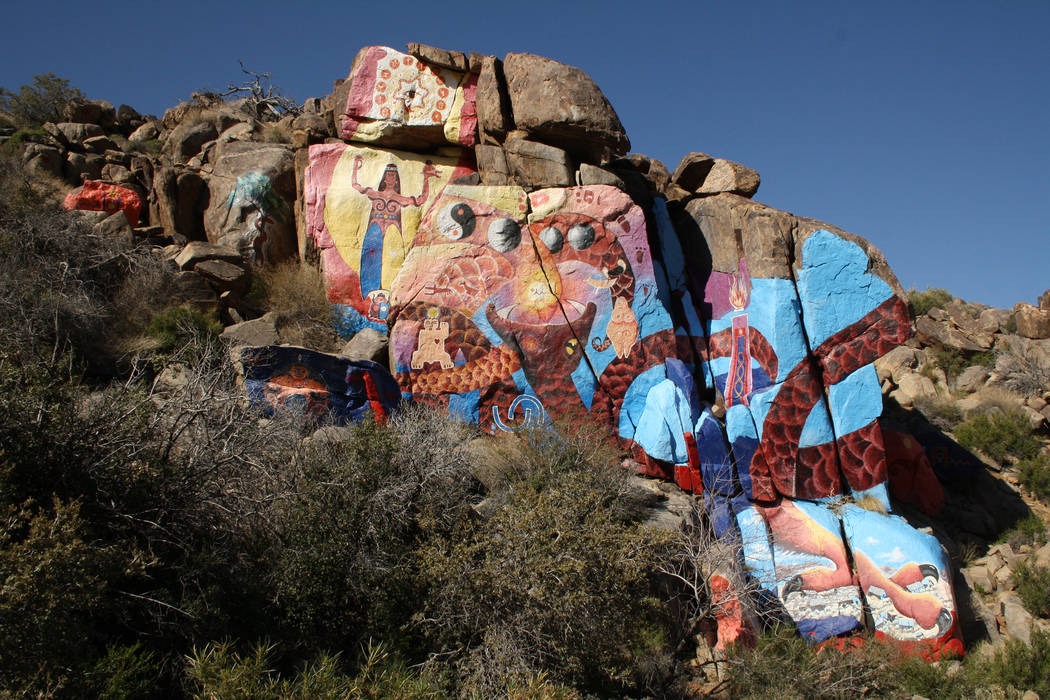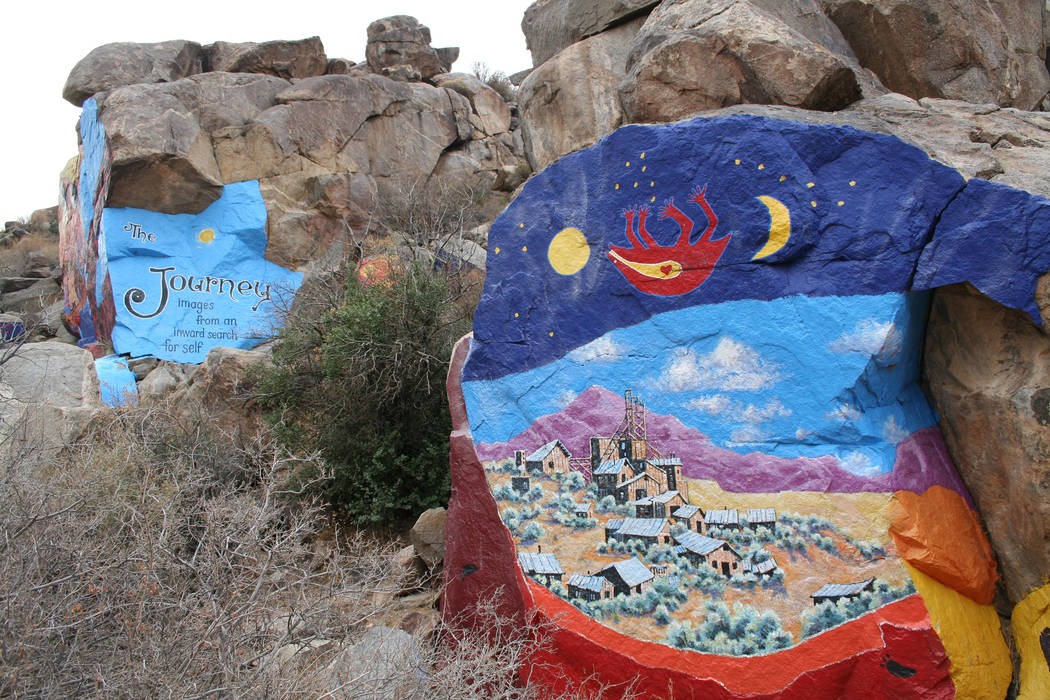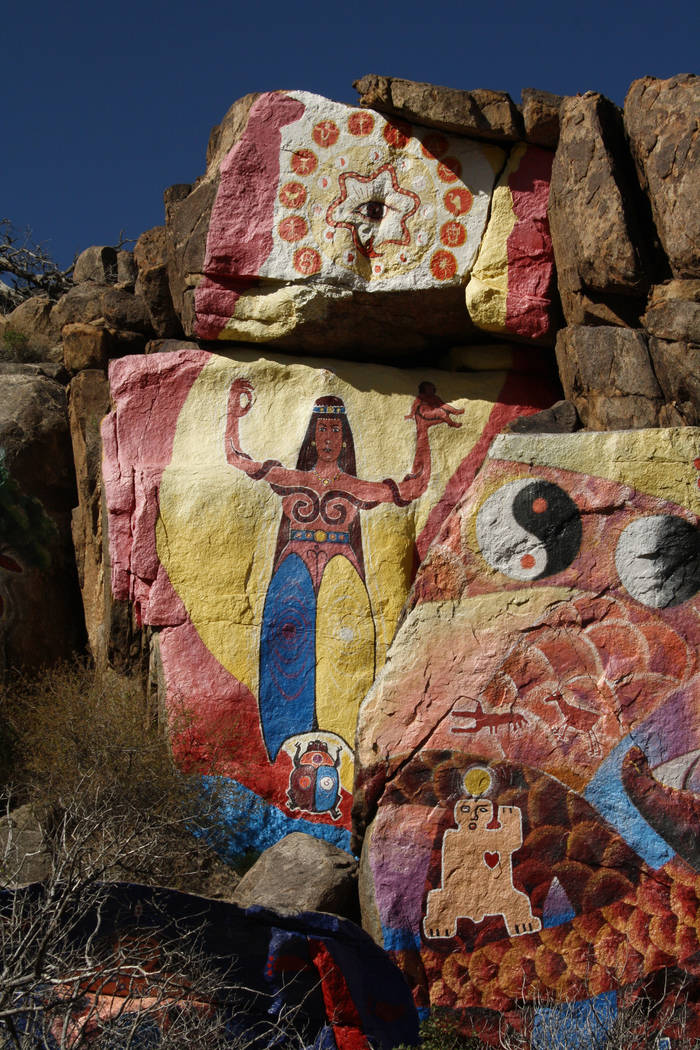Chloride, Arizona, remains a lively, colorful community



If you’re itching for an interesting day trip, Chloride, Arizona, less than 100 miles south of Las Vegas, could fit the bill.
Chloride is different from most other former mining towns in our region. Instead of becoming a ghost town, it has remained a lively place since its biggest mine, the Tennessee, closed in 1947. It is said to be Arizona’s oldest continuously occupied mining town.
Prospectors found riches here as early as the 1840s, and serious mining commenced in the 1870s.
For many years Chloride was the home of Ray Chesson, a beloved author whose typewriter made titans of desert rats and other interesting oddballs.
Fewer than 300 residents remain, an eclectic mix of people who seem to prize individualism and creativity.
Visitors are also welcome to observe those values while strolling around town and taking in yard art, historic buildings, and shops full of antiques and handmade crafts. The compact town is easy to walk.
It is perhaps best known for what some call the Chloride Murals, in a small canyon a couple of miles outside of town at the base of the Cerbat Mountains.
Longtime Las Vegan Roy Purcell painted the murals in 1966 on 2,000 square feet of granite boulders and cliff faces. They depict a benign-looking goddess, as well as the Tennessee Mine under attack by some supernatural being.
To fully understand the complex and somewhat bizarre murals — titled “The Journey: Images From an Inward Search for Self” — you would have to get into the head of Purcell more than 50 years ago. Purcell did once tell me, though, that you need to read them from right to left.
Whether they understand them or not, most people will find the images beautifully painted. The rock art has kept its vibrant hues thanks to Purcell retouching them in 1975, and again in 2006 to celebrate his 70th birthday.
Perhaps he chose the location to honor the Native American rock art — petroglyphs — carved centuries ago into the boulders on the other side of this canyon. Both forms of rock art, the prehistoric and the modern, are worth pondering on your visit.
If you go
Touring Chloride: Pick up a map of the town, for a self-guided walking tour, at the Mineshaft Market, 4940 Tennessee Ave.
Finding the murals: From the center of town drive up Tennessee Avenue for about half a mile until it turns to gravel. You can park here and walk, or if you have a 4×4 vehicle you can continue driving. After you cross the rocky, usually dry wash, stay right at the fork. After about a mile, stay left at another fork. About 50 yards farther, look for the parking pullout on the right and park here. Head up on foot about a quarter mile to the murals.
What to pack: Comfortable walking shoes and an extra layer of clothing. At 4,500 feet of elevation at the murals, it could be 10 to 15 degrees cooler than Las Vegas.
Length of stay: Allow about one-half day to see the murals, town, shops and have lunch at Yesterday’s Restaurant.


















